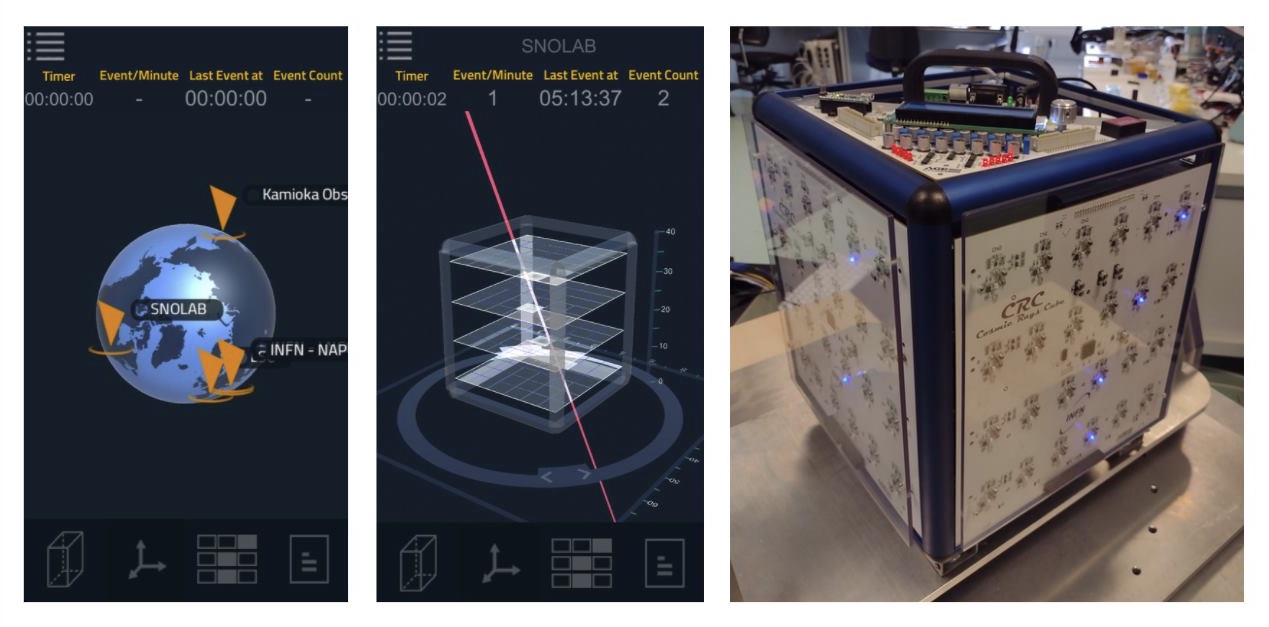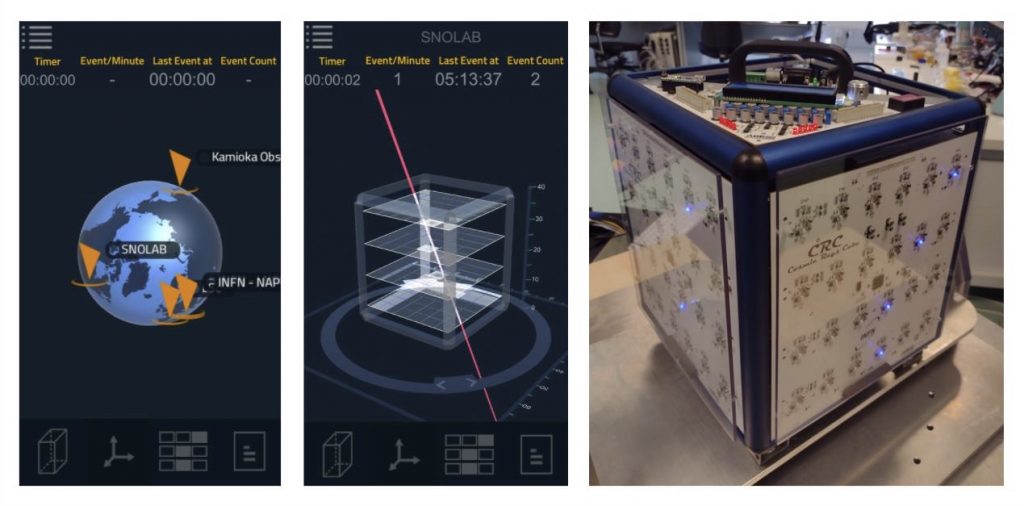
Cosmic Rays Live at SNOLAB
We can’t see it or feel it but the surface of the Earth is constantly bombarded by a steady stream of subatomic particles from space called cosmic rays. These high energy particles originate in the powerful reactions in our Sun, from stars going supernova, and even as far back as the Big Bang. When subatomic particles like protons enter the Earth’s atmosphere, they create a secondary shower of particles, including muons that make up a large portion of the background radiation present on the Earth’s surface.
This invisible background radiation is the reason why sensitive astroparticle physics experiments probing the deepest mysteries of the universe have to be set up underground, shielded from muons and other particles. In fact, the two kilometres of rock overburden at SNOLAB reduces the muon flux by a factor of 50 million times, greater than any other lab on the planet.
There’s a new way to visualize these particles at SNOLAB. Building on the success of the Cosmic Rays Live outreach initiative at the Laboratori Nazionali del Gran Sasso (LNGS), a particle physics lab in Italy, SNOLAB is developing a new outreach program involving a series of Cosmic Ray Cubes (CRC) that detect muons arriving on the Earth’s surface.
Research Scientist Dr. Silvia Scorza is leading the initiative to build the units that will be located here at SNOLAB with the support of the group at LNGS. “We couldn’t have done this without their support and collaboration,” said Scorza. “They have been very generous.”
These CRCs function as muon telescopes. It uses complex technologies – plastic scintillator, special wavelength shifting fibres, and silicon photomultipliers (SiPM). Muons are charged particles that trigger a reaction in the scintillating bars of the CRC, exciting electrons in the material. When this happens, photons of light are produced. These are shifted to a wavelength that the SiPMs are sensitive to.
The SiPMs transform the flash of light into an electrical signal, which contains information about the particle passing through the detector. The electrical signals are presented on the outside of the detector as a flash of light in a series of LEDs arranged in a grid in the x, y, and z planes of the detector. Recently, the CRC has been upgraded to include an auditory signal – for every muon that passes through the detector, a musical note is heard, creating a symphony of particles.
All of this can be viewed on a smartphone with the free Cosmic Rays Live mobile app, available on Google Play and the App Store. Users can view live data from any of the telescopes, including one in the surface building at SNOLAB, one underground at Canfranc Underground Laboratory in Spain, or even one located in a subway station in Naples, Italy! This allows anyone to compare data from around the globe and investigate for themselves using live data and real science.

Cosmic Rays Live on Google Play
Cosmic Rays Live on the App Store